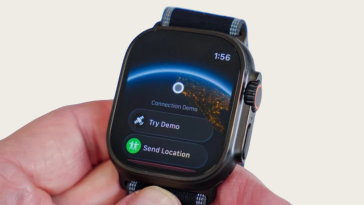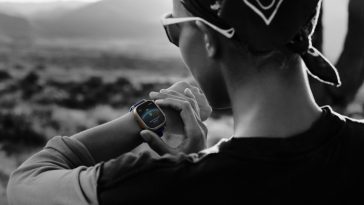Smartphone innovation is advancing at breakneck speed, and screen design has become one of the key battlegrounds for manufacturers. From mesmerizing curved displays to revolutionary foldable screens, these breakthroughs bring both stunning aesthetics and new functional possibilities—but also create unique challenges for the humble screen protector.
In this post, we’ll explore how these developments are dramatically reshaping the requirements, design, and research directions for screen protection solutions.
The Rise of Foldable Screens: Protection for a New Era
Foldable phones, with their ability to switch seamlessly between compact and tablet-like modes, mark a dramatic shift from traditional rigid displays. However, these flexible screens present several new demands for protectors:
- Accommodating the Fold Line: Foldable screens feature a visible crease or hinge area. Screen protectors must flex repeatedly at this joint without bubbling, peeling, or distorting the display, requiring ultra-flexible and durable materials.
- Enhanced Fragility: The plastic and polymer substrates used in foldable displays are more prone to scratches, punctures, and impact damage. Protectors need to offer improved scratch resistance while remaining thin and flexible1.
- Custom Fit and Compatibility: With varying folding mechanisms (inward, outward, clamshell), protectors must be meticulously tailored for each model to ensure full coverage and function.
- Dust and Debris Resistance: Hinges and gaps in foldable designs can allow particles to enter, making a form-fitting, sealed protector critical for device longevity.
R&D Directions for Foldable Screen Protectors
To meet the above needs, manufacturers are exploring:
- Hybrid materials that blend PET, TPU, and tempered glass layers for both flexibility and toughness.
- Self-healing films that repair minor scratches automatically.
- Advanced adhesives and applicators to prevent bubbling along the fold and at the edges.
- Integration with display manufacturers to design protectors as part of the device, not just an afterthought.
Curved Display Technology: New Challenges for Edges and Corners
Curved screens maximize visual immersion but challenge traditional protection methods due to their 3D contours:
- Perfect Curvature Adherence: Only films that can mold precisely to the screen curvature (such as hydrogel protectors) avoid unsightly gaps and edge lifting, which can allow dirt to accumulate2.
- Full Edge and Corner Coverage: Both the main display and the curved sides must be protected, necessitating custom molds and flexible material properties34.
- Touch Sensitivity and Clarity: Protectors need to maintain original display sensitivity to gestures and not obscure visuals, demanding advanced, ultra-clear materials.
R&D Innovations Addressing Curved Screens
- Hydrogel Protectors: These offer flexibility, self-healing abilities, and easy installation. They conform tightly to complex curves, without bubbling or wrinkling, and are often touted as the most reliable curved screen protection currently available3.
- Curved Tempered Glass: Specially engineered glass that is thermoformed to fit the device contour—though it demands precision manufacturing and may not work on every device shape4.
- Nano-coatings and Anti-smudge Layers: Advanced oleophobic and hydrophobic coatings are applied at the nanometer scale to repel oils and water, keeping screens clean.
Next-Gen Materials: Meeting Modern Demands
As the boundaries of smartphone design keep expanding, material science has stepped up:
- Tempered Glass: Still a popular standard for rigidity and impact resistance, especially on flat or slightly curved surfaces. It undergoes specialized chemical treatment for strength.
- Hybrid and Composite Films: Multi-layer solutions that combine the best attributes of glass for protection and plastics for flexibility—key for foldables and pronounced curves.
- Nanotechnology and Graphene: Nanotech-enabled glass can be ultra-thin, transparent, and extremely resistant to scratches. Graphene adds superior impact resistance and heat dissipation5.
- Function Integration: Some advanced protectors now include blue light filtering, privacy shading, and self-healing surface layers to meet additional consumer needs.
Conclusion: Protection Must Evolve With Display Innovation
As smartphones evolve, so must the accessories that keep them safe. Foldable and curved displays call for bespoke, flexible, and multi-functional screen protectors—a far cry from the generic films of the past. The R&D focus is shifting toward hybrid materials, precision engineering, and smart coatings that preserve device beauty, function, and longevity. For users, choosing the right protector for a next-gen smartphone is more important than ever. For manufacturers and developers, the challenge (and opportunity) lies in crafting solutions that keep pace with the industry’s rapid innovation.- https://www.honor.com/uk/blog/common-durability-issues-in-foldable-phones/
- https://protectionecran.com/en-wd/blogs/news/comment-proteger-son-ecran-incurve
- https://www.tpuprotector.com/news/what-kind-of-screen-protector-is-suitable-for-curved-screen-208167.html
- https://www.gtelglass.com/blogs/news/curved-edge-screen-protector
- https://screenshield.us/blogs/blog/innovative-materials-in-screen-protection-the-cutting-edge-tech-behind-the-shield





 No products in the cart.
No products in the cart.